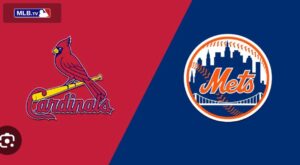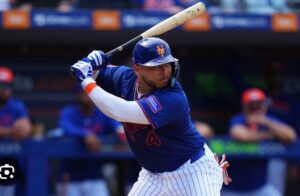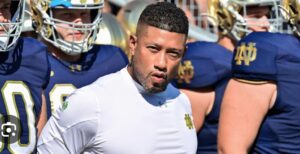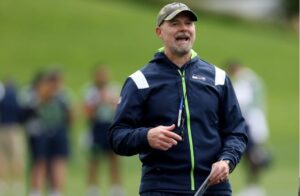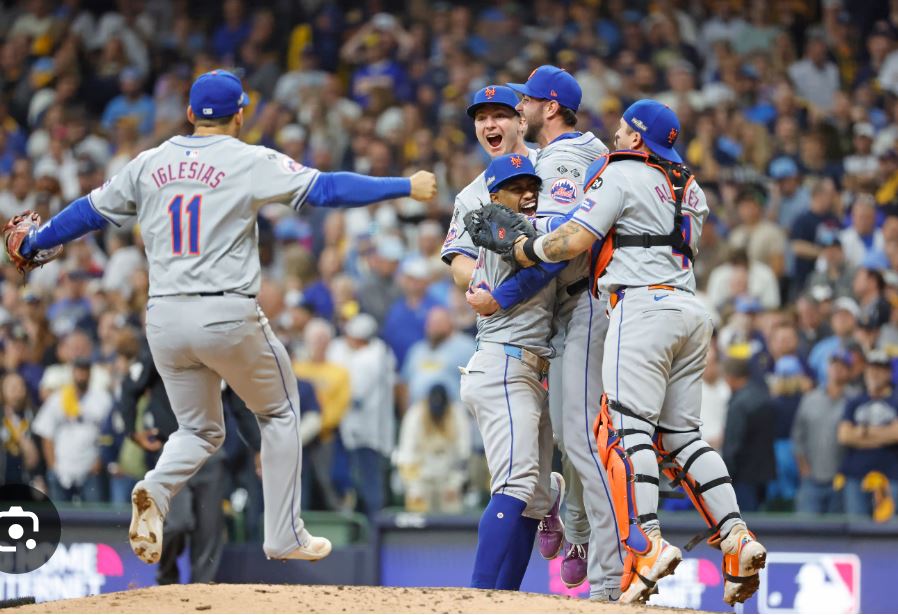
Though no one considers the Mets’ starting rotation to be a juggernaut, it does appear to be more apparent than it was at this point last spring.
A lot of work had to be done to replace the production left by Jose Quintana, Luis Severino, and Sean Manaea—and, to the front office’s credit, that job appears to have been completed before the new year. It undoubtedly helped to replace Manaea with Manaea, who recently inked a three-year contract worth $75 million to stay in Queens.
Perhaps it isn’t the last starting pitching move David Stearns makes this offseason, but it feels like the last important one, putting a finishing touch on what appears to be a competitive staff.
The main concern with the Mets rotation isn’t necessarily the pecking order, but whether the team will use a five- or six-man rotation to begin the season—something we’ll discuss later. But for now, let’s start pecking:
Kodai Senga
Nobody should argue that Senga is the team’s best player. Senga has topped all Mets pitchers in Baseball Reference Wins Above Replacement (4.6) and Fangraphs WAR (3.6) over the last two seasons, despite appearing in only one regular-season game in 2024. Senga also demonstrated some brilliance in three limited postseason appearances, though they will be remembered more for the several walks and earned runs.
A healthy Kodai Senga remains the most skilled and potentially effective starter on the squad, and with considerable high-leverage experience as an ace pitcher in Japan’s NPB, there is no better option to fill that role for the Mets.
To put it another way, the Mets are investigating a six-man rotation primarily for the purpose of optimizing their ace; without that aspect, the Mets would hardly consider extending a starting rotation with a lot of questions.
Sean Manaea

Perhaps he didn’t throw like an ace, but when the Mets needed a horse during their scorching second half in 2024, Manaea rode to the top of the rotation.
Manaea topped all Mets pitchers in wins (12), strikeouts (184), and bWAR (3.0), and from July on, he led all MLB pitchers in innings pitched (105 1/3, more than seven innings than second-place Nathan Eovaldi). He even stepped up in the playoffs, pitching well in three starts until tiring against the Dodgers in Game 6 of the National League Championship Series.
Manaea may also benefit from a six-man rotation due to weariness. The soon-to-be 33-year-old set a career high in innings pitched last season (181 2/3), much of which were spent fiddling with an eventually successful mechanical modification. If the Mets can get Manaea more rest between starts, it might reduce his injury risk and keep him at the top of the rotation for the bulk of the season.
David Peterson
Imagine last year assuming Peterson would be a fixture in the Mets’ starting rotation for the 2025 season, let alone in the opening half of it.
However, this demonstrates Peterson’s growth in 2024—a year that revealed numerous issues about his underlying metrics while also demonstrating Peterson’s ability to minimize runs in high-pressure scenarios.
Perhaps the modest tweaks he made to his pitch selection (such as throwing his sinker more) will result in big-league productivity again—or Peterson will revert to the fringe-level starter he has been for the majority of his career. In any case, the lefty will have another opportunity to demonstrate his abilities.
Frankie Montas
Last year, the Mets under Stearns purchased low on two oft-injured, high-talent starters, Manaea and Severino, and it worked almost perfectly. This time, the initiative focuses on free agent signing Frankie Montas, who has been with five different teams in the last three seasons.
Montas pitched 150 2⁄3 innings for Milwaukee and Cincinnati in 2024, barely underperforming his predicted numbers (which were not particularly impressive). But the righty received Cy Young votes when pitching for Oakland in 2021 and had a lot of success with his sinker last season, so a Severino-like return for the Mets isn’t out of the question.
Clay Holmes
It seems a little early to name a pitcher who last began a game in 2018 as the fifth starter in the rotation, but all sources indicate that the Mets are dedicated to making Holmes a regular MLB starter.
Perhaps it’s to exorcise the demons of Seth Lugo’s entire experience, or it’s to see how well the Giants converted Jordan Hicks to a starter (at least for the first two months of 2024)—whatever the reason, Holmes will get his chance to start at the back end of a five (or six) man rotation.
But what about the sixth spot?
Tylor Megill, Paul Blackburn, José Buttó
If the Mets base their staff on a six-man rotation, they have a few fascinating choices for bringing up the caboose.
Megill appears to have been born for this role, as he is a high-variance pitcher with a good arm who has provided enough juice to stay but has yet to “prove it.” If Megill does “prove it” with excellent back-end productivity, the Mets could have a dangerous rotation, even if it doesn’t match Philadelphia’s starting staff.
Of course, Megill’s selection for that role is difficult to justify given that Buttó has been the stronger pitcher over the last two seasons. But the Mets’ issue with Buttó last year is the same one they’ll confront this year: should they go for strong output from Buttó as a starter or pencil in productive relief appearances for a bullpen that will most likely need it? Call it the Lugo quandary, but with Buttó and a sixth starter on the line.
Then there’s Blackburn, who has far more MLB experience than either Megill or Buttó, but has never been better than average in any of his Major League campaigns. However, he is one of three Mets starters on the active roster to have made an All-Star appearance (Senga and Holmes), which is impressive.
Blackburn might possibly be the greatest match for the starting role, given how much time Megill and Buttó spent in the bullpen last year. Adding all three pitchers to the active roster might strengthen the Mets, although it’s unclear who will back Edwin Díaz in the bullpen.
The Rest
Call them depth, backup plans, or emergency starters—the Mets surely have them.
First up is Griffin Canning, who is a Major League starter by definition—just not a particularly good one last year, allowing an American League-high 99 runs in 31 starts for the Los Angeles Angels.
Dylan Covey and Max Kranick, both on the 40-man roster, have Major League starting experience. Kranick, on the other hand, spent the majority of 2024 with Triple-A Syracuse and hasn’t pitched in the Majors since 2022, whereas Covey has started just one MLB game since 2019, including two years in Taiwan. It’s safe to assume that if either of these pitchers starts more than two games for the Mets in 2025, something has gone very wrong.
Finally, let me mention the prospects. Christian Scott (technically no longer a prospect) is slated to miss the entire 2025 season recovering from Tommy John surgery, but the flashes of skill he demonstrated in 2024 make him an intriguing option for a spot in the 2026 rotation. The same might be said of top pitching prospect Brandon Sproat, who has a powerful arm but struggled in seven starts for Syracuse last season. Much like Covey and Kranick, the Mets would benefit from not seeing MLB play this season.
